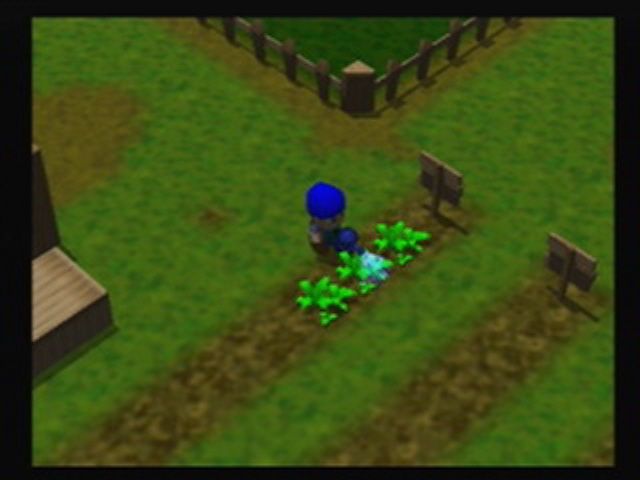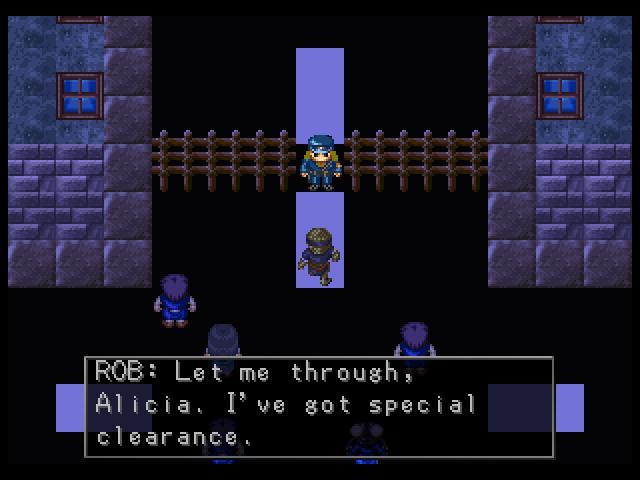Spoom's RPG How-to: Better Villains
2,053 views
2,053 views
0

Villains are the cornerstones of good games. Stories are created from conflict and the villain supports that conflict. If you have a weak villain, you'll have a weak story. It is, regrettably, very easy to make a lackluster villain. This is especially true when you work backwards and create a villain out of a need, for the plot. The three things that a good villain needs are: plausibility, emotional attachment, and spotlight.
Plausibility:
When your villain and his plan are plausible, it lends credibility to your game's setting and your villain's threat. First, and most importantly, the goal your villain has must be reasonable; however, it only has to be reasonable to the villain. The reason it's often difficult to make a goal seem reasonable is because a villain's goal is often world domination or global annihilation. These two things don't relate very well to players; frequently, they have a hard time imagining why someone would desire such a goal. To keep this in line, make sure to keep the scale of your villain's plan in line with his means and his motivation.
Second in line is your villain's means. A lot of games place the villain's means at the central point of the plot, but ignore important details about them. The way a villain plans to accomplish his goal should be rare, hard to obtain, virtually unheard-of, or a combination of the above. If your villain is already the strongest thing in existence, then he shouldn't be looking for something to make himself more powerful without a solid reason. Keeping your villain's means all-but-unobtainable certifies him as someone who is willing to go farther than anyone before him. If possible, you should make sure to show his determination to gain that power.
Last, but not least, your villain needs motivation. Early on, many villains were just evil and often content with sitting in their tower until the end of the game. Unless your villain was created during the game, his motivation will be created along with his history. Especially difficult, complicated, or lengthy goals require a motivation of a higher standard. Although the majority of villains have large-scale goals, it's possible to maintain the plot's momentum with small-scale goals. The key to accomplishing this is to make sure that the villain's goals are focused directly on the main characters. This has the added bonus of falling under the radar of any other major power in the world.
Emotional Attachment:
Emotional attachment is vital to increasing player investment into your game and its characters. Commercially, it is a far more common practice to attempt to emotionally attach the players to your villains than it is to create a plausible villain. This is because it is easier to understand and relate to the consequences of a villain's actions. The three emotions commonly used to create emotional attachment are outrage, respect, and sympathy.
Outrage is the most common of the three, and perhaps the easiest to create. In order to create outrage towards your villain, you must have him destroy something of great emotional value, take horrendous actions with little to no reason, or threaten actions that are generally seen as lowly or vile. Using poison, taking hostages, blackmailing decent people, and stealing from the poor are all actions that can cause outrage.
Respect is the next most common emotion, but is a little harder to create. In order to create respect towards your villain, you must have him use honorable actions or he must have an honorable goal. Either way, you should balance out his honor with his actions or goal by making the other one into the thing that defines him as a villain. Keeping a fight fair, keeping your word when it's disadvantageous, and helping the winning side after you lose are all actions that can create respect.
Sympathy is significantly less common than the other two emotions, but can have a powerful impact when employed correctly. In order to create sympathy for your villain, he must be forced into doing something beyond his tolerance for evil or he must lose something precious. It is also possible for your villain to gain sympathy by being tricked into the same situation, but that also creates outrage towards the one who tricked him. Sympathy is usually reserved for minor villains.
Spotlight:
Spotlight is essentially how you present the various aspects of your game. After all, if you never present your villain's motivation, your player will never know what it is. It also helps if you show it happening, instead of saying that it happened. Active exposition is easier to believe and can be remembered for a longer period of time. Every appearance your villain makes should increase his plausibility, create emotional attachment, or further develop a previously established aspect.
Example: Kefka (Final Fantasy 6 Spoilers
Goal: Kefka wanted everyone to worship him. It is only after the party convinces him that there will always be those who disobey him that he decides to exterminate all life.
Means: Kefka was infused with magic from Espers for the first half of the game, but he gains real power when he re-aligns and absorbs the magic from the warring triad.
Motivation: Cid infused magic into Kefka via a flawed method. After this, Kefka no longer saw any meaning to life.
Emotional Attachment: The most notable point of emotional attachment Kefka creates is during the poisoning of Doma.
Spotlight: Kefka is given numerous scenes throughout the first half of the game, but is only shown once in the last half of the game. Out of the entirety of the game, however, there is only 1 line regarding Cid's flawed experiment on Kefka and it is both optional and easy to miss.
Plausibility:
When your villain and his plan are plausible, it lends credibility to your game's setting and your villain's threat. First, and most importantly, the goal your villain has must be reasonable; however, it only has to be reasonable to the villain. The reason it's often difficult to make a goal seem reasonable is because a villain's goal is often world domination or global annihilation. These two things don't relate very well to players; frequently, they have a hard time imagining why someone would desire such a goal. To keep this in line, make sure to keep the scale of your villain's plan in line with his means and his motivation.
Second in line is your villain's means. A lot of games place the villain's means at the central point of the plot, but ignore important details about them. The way a villain plans to accomplish his goal should be rare, hard to obtain, virtually unheard-of, or a combination of the above. If your villain is already the strongest thing in existence, then he shouldn't be looking for something to make himself more powerful without a solid reason. Keeping your villain's means all-but-unobtainable certifies him as someone who is willing to go farther than anyone before him. If possible, you should make sure to show his determination to gain that power.
Last, but not least, your villain needs motivation. Early on, many villains were just evil and often content with sitting in their tower until the end of the game. Unless your villain was created during the game, his motivation will be created along with his history. Especially difficult, complicated, or lengthy goals require a motivation of a higher standard. Although the majority of villains have large-scale goals, it's possible to maintain the plot's momentum with small-scale goals. The key to accomplishing this is to make sure that the villain's goals are focused directly on the main characters. This has the added bonus of falling under the radar of any other major power in the world.
Emotional Attachment:
Emotional attachment is vital to increasing player investment into your game and its characters. Commercially, it is a far more common practice to attempt to emotionally attach the players to your villains than it is to create a plausible villain. This is because it is easier to understand and relate to the consequences of a villain's actions. The three emotions commonly used to create emotional attachment are outrage, respect, and sympathy.
Outrage is the most common of the three, and perhaps the easiest to create. In order to create outrage towards your villain, you must have him destroy something of great emotional value, take horrendous actions with little to no reason, or threaten actions that are generally seen as lowly or vile. Using poison, taking hostages, blackmailing decent people, and stealing from the poor are all actions that can cause outrage.
Respect is the next most common emotion, but is a little harder to create. In order to create respect towards your villain, you must have him use honorable actions or he must have an honorable goal. Either way, you should balance out his honor with his actions or goal by making the other one into the thing that defines him as a villain. Keeping a fight fair, keeping your word when it's disadvantageous, and helping the winning side after you lose are all actions that can create respect.
Sympathy is significantly less common than the other two emotions, but can have a powerful impact when employed correctly. In order to create sympathy for your villain, he must be forced into doing something beyond his tolerance for evil or he must lose something precious. It is also possible for your villain to gain sympathy by being tricked into the same situation, but that also creates outrage towards the one who tricked him. Sympathy is usually reserved for minor villains.
Spotlight:
Spotlight is essentially how you present the various aspects of your game. After all, if you never present your villain's motivation, your player will never know what it is. It also helps if you show it happening, instead of saying that it happened. Active exposition is easier to believe and can be remembered for a longer period of time. Every appearance your villain makes should increase his plausibility, create emotional attachment, or further develop a previously established aspect.
Example: Kefka (Final Fantasy 6 Spoilers
Goal: Kefka wanted everyone to worship him. It is only after the party convinces him that there will always be those who disobey him that he decides to exterminate all life.
Means: Kefka was infused with magic from Espers for the first half of the game, but he gains real power when he re-aligns and absorbs the magic from the warring triad.
Motivation: Cid infused magic into Kefka via a flawed method. After this, Kefka no longer saw any meaning to life.
Emotional Attachment: The most notable point of emotional attachment Kefka creates is during the poisoning of Doma.
Spotlight: Kefka is given numerous scenes throughout the first half of the game, but is only shown once in the last half of the game. Out of the entirety of the game, however, there is only 1 line regarding Cid's flawed experiment on Kefka and it is both optional and easy to miss.








